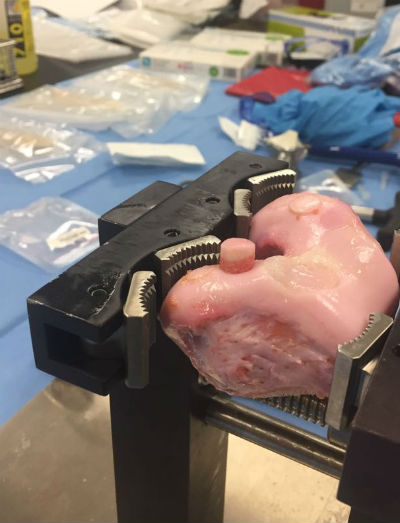In March 2017 I visited JRF Ortho in the USA. JRF is a breakaway company of the joint venture between AlloSource® and Community Tissue Services® (CTS) and the relationship between them allows rapid supply of fresh grafts from the source to the surgeon.
28-day window from donor to recipient
JRF's osteochondral allografts in particular, and also their meniscal allografts, are treated differently to the rest of the soft tissue. allografts and other allografts that are sourced. The reason for this is that the fresh allografts need to be taken from the donor and put into the recipient within 24-28 days. Studies have shown that the cartilage viability is only really there up until 28 days and after that it drops off enormously. So they have developed this incredible system for harvesting and assessing both the patient and the graft to make sure there are no infections and no issues with it. Interestingly in the last 10 years there has not been one single case of disease transmission from allograft using their techniques. The potential risk of getting an infection is quoted as being one in 1.5 million but really it applies to blood transfusions as opposed to these fresh grafts. No-one' has had an infection for the last ten years.

So the grafts are retrieved, placed into sealed packets with a medium that allows bacteria to grow if they are present, and there is a colour change indicating if they are positive for this - and if they if they are negative they can continue to go through the process. And it's a bit like a liver transplant or a kidney transplant in terms of the patients - you have to be on standby and just be prepared to drop things and have the surgery. It's just amazing.
Osteochondral grafts are not something that we do in the UK but it's one of the things that I have seen exploding in the USA - it's a fantastic way of treating cartilage damage. You can take a patient who has got a really badly worn weight bearing area - predominantly this is femur as opposed to tibia - we see this quite frequently - and you replace it with these fresh grafts. Of course it requires access to the instruments and access to the tissue.
